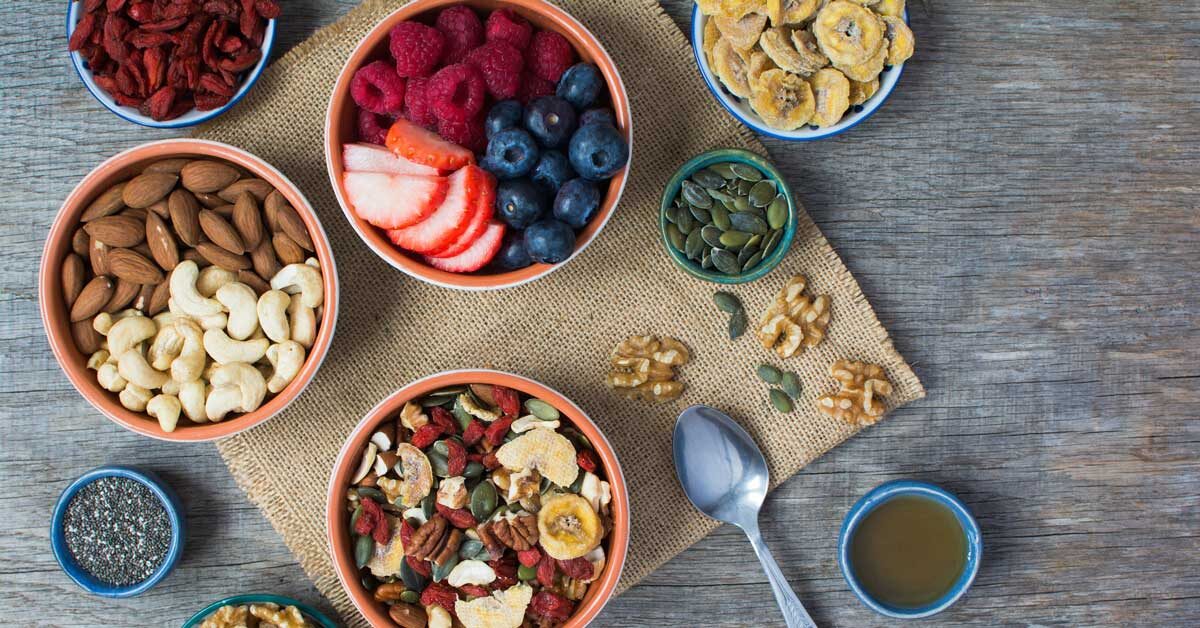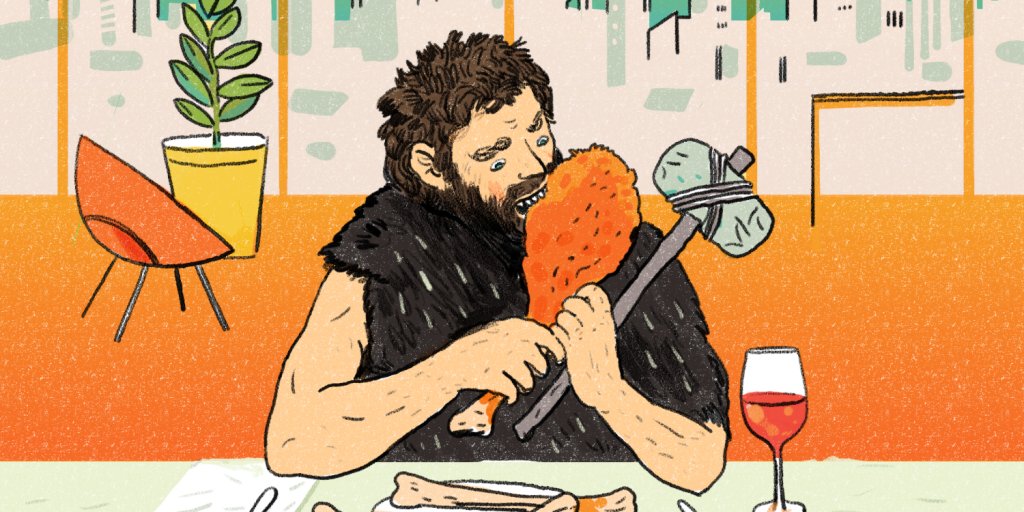
The paleo diet emphasizes eating food that our ancestors would have eaten. This diet includes food such as apricots and dried pumpkin seeds. It is also filled with chicken, sweet potatoes, and vegetables. EatingWell understands that the paleo diet can be restrictive. However, they believe in the value of certain foods. Here are some suggestions for healthy foods that you can enjoy while eating healthy.
Pola Makanan paleolithic womanusia
Christina Warinner, Ph.D., studied pola makan manusia purba and mitos-mitos pola makanan paleolithic manusia in 2010. She revealed that manusia Paleolithic manusia consumed large quantities of daging, and ate all types of meat. This myth was widely believed by paleolithic people, but is now considered outdated and irrelevant.
Paleo diet, also known as "diet of the manusiagua", is a way for people to eat in a similar fashion to the food that manusiagua and men used to consume. Their kesehatan is improved and they preserve their heritage. But, not everyone can eat this diet. It is not for everyone, and is suited for only a limited number of people.
The Ramasokat lukisan is composed of two types kelompokan: Ceruk and Lukisan Gua. They were cultivated in the areas of Sulawesi Tenggara and Liabalano. The lukisan gua contains a mixture of proteins, fats, carbohydrates, and amino acids. These nutrients support healthy living. They may also help us understand the details of human evolution.

The diet of modern humans has many benefits, but also a few risks. People who eat foods high in nutrients such as those from the Paleolithic Era will be more susceptible to developing diseases. A healthy diet will reduce your risk of developing diseases. Clean Eating is a diet that promotes healthy eating. These are the obvious benefits to eating clean: A diet low in fat can help your health. You won't get sick by overeating.
Paleolithic diet foods
A lot of processed foods contain added sugars and vegetable oils. These can have a negative impact on your health. The excess salt and refined sugars that are found in processed foods can lead to obesity. Heart disease can also be caused by high levels of salt. Vegetable oils can also be controversial. The American Heart Association suggests that safflower and corn oil replace canola. These oils contain high levels of omega-6 fatty acids.
Many commercial paleo diets prohibit dairy products, but others have stricter restrictions. A paleolithic diet allows for lean pork loin, roasted chicken, onion and carrot stuffing, as well as steamed broccoli. Other paleo diets allow for small amounts maple syrup and honey. This diet has received varying degrees of scientific research.
Paleo advocates recommend that you avoid legumes because they contain high amounts of phytic acids. These substances block the absorption from the gut of essential minerals. In some cases, however, they may be allowed. While it may be tempting to eat legumes and potatoes, it's not recommended to add them to your diet as often as you would other processed foods. Instead, include lots of fruits and veggies in your daily meal plans.
Guidelines for eating a paleolithic lifestyle
Although they are quite different from the usual modern diet, the Guidelines to Eating a Paleolithic Diet share many of the same principles. The Paleolithic diet primarily consisted of animal products. But it's also rich in plant foods, so there aren't many limitations. However, it is important to note that you may not be genetically suited for the diet, and that the higher meat consumption may not be healthy. Paleolithic food is not for everyone.

Paleolithic diets are known to exclude dairy products. You could be at risk for nutritional deficiency if you eliminate these key food groups. In particular, a lack of calcium in the diet can lead to tooth decay, and deficiency in this vital mineral may have detrimental effects on your bones and teeth. Calcium also plays a key role in blood Clotting and Muscle Contracting. Whole grains can reduce your risk of stroke, heart disease and type 2 diabetics. Because grains were mostly eliminated, you could be at risk for calcium deficiencies.
There are many guidelines that Paleolithic people should follow when eating. It emphasizes eating nutrient-rich plants and proteins, and limits carbohydrates and processed foods. It is important that you follow the guidelines to ensure that you don't go overboard. Each person's paleolithic lifestyle is unique. It is important you realize that the Paleolithic food plan is based on an ancient lifestyle.
FAQ
How do I become a Chef?
There are many avenues to become a professional chef. To start, you can take a course at your local community college. You can then look into going to culinary school. Finally, consider a paid internship.
What equipment do I need to cook?
No, you don't need any special equipment to learn to cook. However, having the right tools can make cooking easier. For example, a knife could be used for pasta making or a whisk would be better than a hand mixer for whipping egg whites to stiff peaks. Having the right tools can make cooking less daunting and allow you to get started faster.
What's the best way to keep leftovers safe?
Tupperware containers are a good choice for leftovers. These containers protect food from spoilage and keep it fresh. They also keep foods warm for longer. Freezer bags can be used to freeze any leftover food. When freezing food, place the bag inside another freezer bag so that air doesn't escape. Once the food has frozen, you can transfer it to an airtight container like a zipper lock bag.
Statistics
- In the United States, the category is estimated at $23.2 billion annually and is growing faster than the market. (washingtonpost.com)
- The median pay for a chef or head cook is $53,380 per year or $25.66/hour, according to the U.S. Bureau of Labor Statistics (BLS). (learnhowtobecome.org)
- under 10 Kids have been taught that there is special food just for them, and Fiese says that 10 percent of kids will throw a tantrum if they don't get the food they want. (washingtonpost.com)
External Links
How To
How to make a perfect omelet
Omelets are my favorite breakfast dish. But how do you make them perfectly? Many different recipes and methods have failed to work for me. I have some tips and tricks to help you make delicious, fluffy omelets every single morning.
We should first know that eggs are very temperamental ingredients when making omelets. You must get them fresh, organically, and keep them cold until you cook. If they are not kept cold enough, the whites won’t form properly. The yolks will also break down too quickly and become runny. This causes your omelets to look oddly colored. If you intend to cook your eggs immediately, it's best to use room-temperature egg.
Another tip is to separate your egg before adding it into the pan. The yolk and white should not be mixed together as this can cause the omelet's curdle.
The bottom part of an egg that is added directly to the stovetop might be burned, which could cause a ruined texture in your omelet. Instead, heat the egg for 10 seconds in the microwave before placing it in the pan. The heat from the microwave cooks the egg just enough without overcooking it.
Let's now talk about mixing eggs. Mixing eggs together is important. You need to beat them well. To do this, take the bowl from the mixer and flip it upside-down. Next, shake the bowl vigorously. The egg will be thoroughly mixed in the bowl as the air is whipped.
Now comes the fun part - pouring the milk into the mixture. The first step is to pour half of the milk in the beaten eggs. Next, fold the eggs into the remaining milk. Do not worry if you see streaks of egg; they will disappear when the omelet is flipped.
After folding the eggs fold the pan onto medium heat. When the oil starts to hot, wait for the pan to cook. Once the oil starts getting hot, add 1/4 cup of butter to the pan and swirl it around to coat the entire surface of the pan. Now carefully crack open the lid of the pan and sprinkle salt into the pan. A pinch of salt will help prevent the omelet from sticking to the pan.
Cover the pan once the omelet is formed and allow it to cool completely. Flip the omelet upside down or with a spatula. Cook the other side for about a minute. Remove the omelet from the pan and serve immediately.
This recipe works best when you use whole milk.